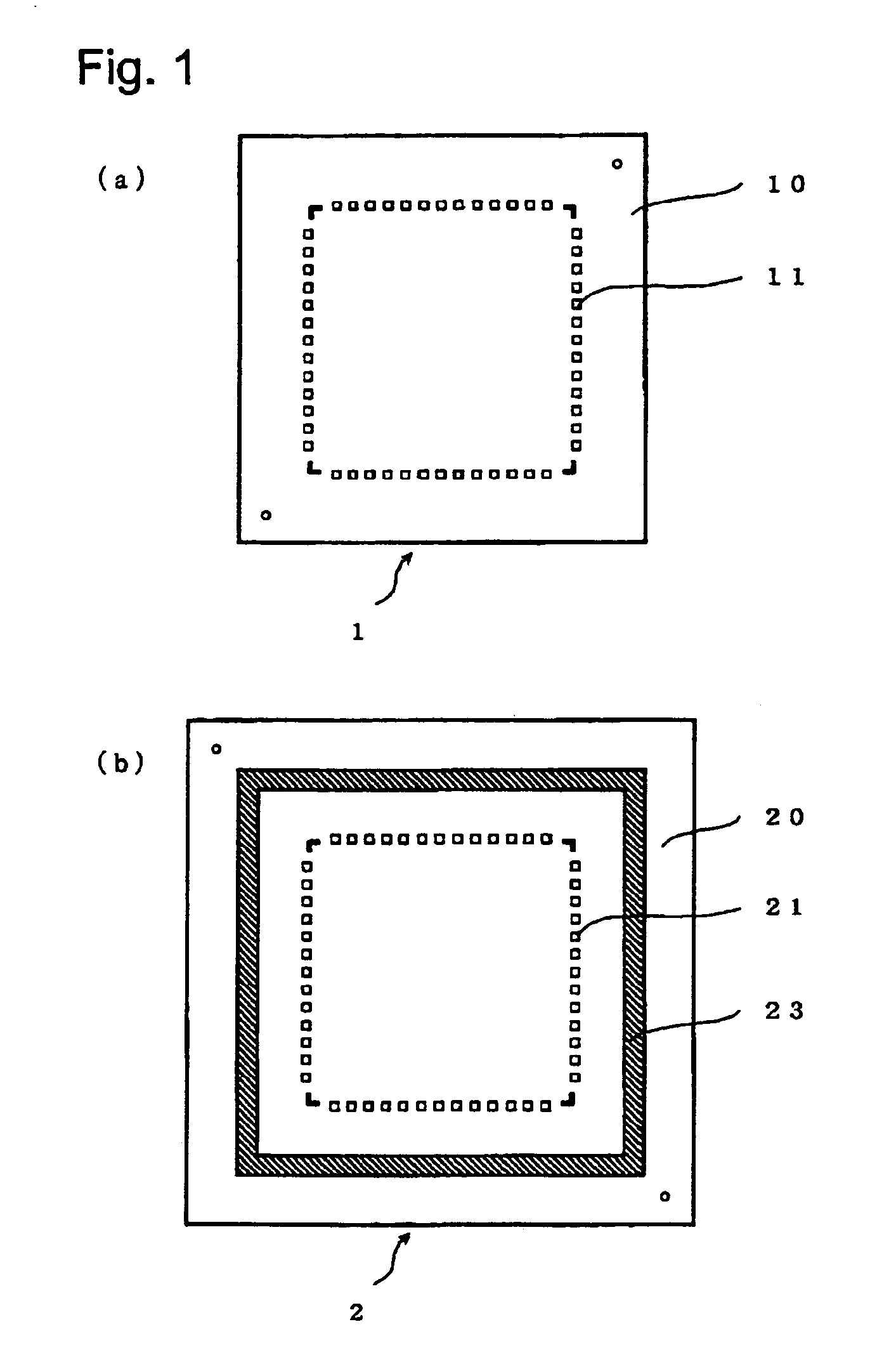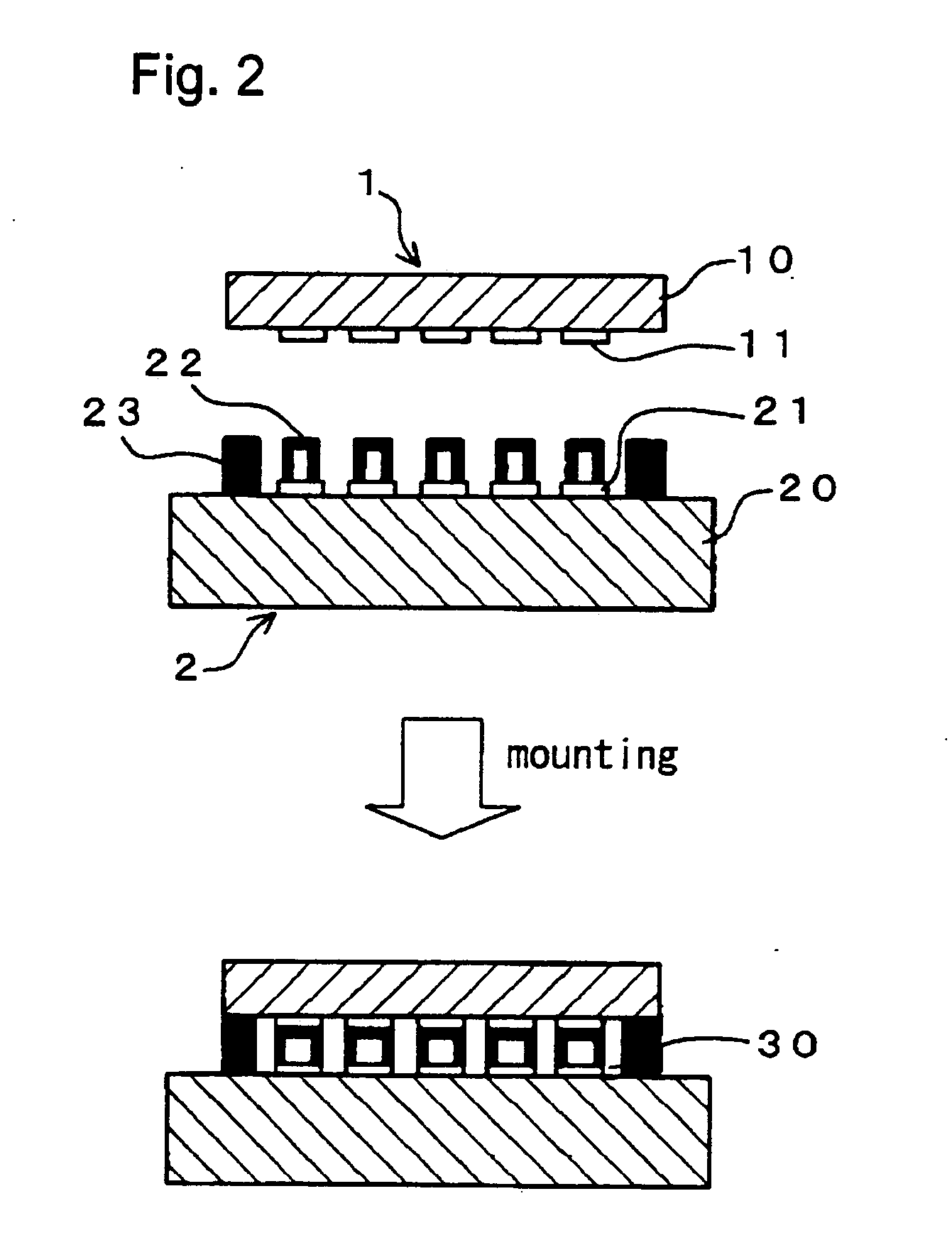High-reliable semiconductor device using hermetic sealing of electrodes
- Summary
- Abstract
- Description
- Claims
- Application Information
AI Technical Summary
Benefits of technology
Problems solved by technology
Method used
Image
Examples
first embodiment
[0051] The
[0052] The first embodiment of the present semiconductor device is made by mounting a fist substrate on a second substrate, wherein electrodes formed on the first substrate and electrodes formed on the second substrates are electrically connected via bumps.
[0053] Examples include a semiconductor package in which a semiconductor chip of a Si substrate and an interposer of a Si substrate are connected via bumps.
[0054] As shown in FIG. 1(a), on a Si substrate 10 of a semiconductor chip 1, one or more electrodes 11 and other circuits (not shown) are formed by using conventional materials and a conventional process.
[0055] As shown in FIG. 1(b), on a Si substrate 20 of an interposer 2, one or more electrodes 21 and other circuits (not shown) are formed by using conventional materials and a conventional process. A frame member 23 surrounding the one or more electrodes 21 is further formed.
[0056] As shown in FIG. 2, elastic bumps 22 are bonded on each of the one or more electr...
second embodiment
[0077] The
[0078] The second embodiment of the present semiconductor device is made by mounting a fist substrate on a second substrate, wherein electrodes formed on the first substrate and electrodes formed on the second substrate are electrically connected via a bumpless connection.
[0079] Examples include a semiconductor package in which a semiconductor chip of a Si substrate and an interposer of a Si substrate is connected via a bumpless connection.
[0080] As shown in FIG. 4, on a Si substrate 10 of a semiconductor chip 1, one or more electrodes 11 and other circuits are formed by using conventional materials and a conventional process. More specifically, on the Si substrate 10, a wiring layer 16 of a semiconductor element is formed, and an insulating layer 17 is formed thereon. Further, on the insulating 17, a ground wiring layer 18 is formed.
[0081] Through holes are formed through the insulating layer 17 and the ground wiring layer 18, which reach to the wiring layer 16. The el...
PUM
 Login to View More
Login to View More Abstract
Description
Claims
Application Information
 Login to View More
Login to View More - R&D
- Intellectual Property
- Life Sciences
- Materials
- Tech Scout
- Unparalleled Data Quality
- Higher Quality Content
- 60% Fewer Hallucinations
Browse by: Latest US Patents, China's latest patents, Technical Efficacy Thesaurus, Application Domain, Technology Topic, Popular Technical Reports.
© 2025 PatSnap. All rights reserved.Legal|Privacy policy|Modern Slavery Act Transparency Statement|Sitemap|About US| Contact US: help@patsnap.com



